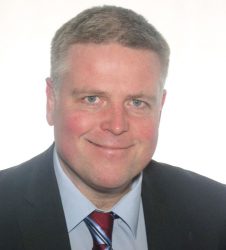Final Call with Andreas Delhusen, DHF Airport Systems
- Like
- Digg
- Del
- Tumblr
- VKontakte
- Buffer
- Love This
- Odnoklassniki
- Meneame
- Blogger
- Amazon
- Yahoo Mail
- Gmail
- AOL
- Newsvine
- HackerNews
- Evernote
- MySpace
- Mail.ru
- Viadeo
- Line
- Comments
- Yummly
- SMS
- Viber
- Telegram
- Subscribe
- Skype
- Facebook Messenger
- Kakao
- LiveJournal
- Yammer
- Edgar
- Fintel
- Mix
- Instapaper
- Copy Link
Posted: 24 May 2016 | Andreas Delhusen, President and CEO of Swedish software solutions provider, DHF Airport Systems | No comments yet
Andreas Delhusen, President and CEO of Swedish software solutions provider, DHF Airport Systems, reveals the innovative Airport Fault Detection System (AFDS) and how it can contribute to airport disruption management…


Andreas Delhusen, President and CEO of Swedish software solutions provider, DHF Airport Systems
Today’s airports are continuously focusing on IT and ‘smart’ technologies to help improve infrastructure, relieve capacity issues and enhance passenger processing, operational efficiency, and baggage handling. DHF’s software for alarm management in critical airport systems and processes can substantially support airports and air navigation service providers (ANSPs) to improve the performance of various airport systems.
“Compared to alternative alarm management solutions, DHF’s technology is disruptive in the way that it, based on unique algorithms, offers a new set of additional values resulting in a better and a more affordable solution for airports and ANSPs,” says President and CEO of DHF, Andreas Delhusen. “DHF’s AFDS is the only software on the market able to identify 100% of any possible root faults and filtrate them from any consequential faults. The main benefit and business case for the AFDS is radically reduced downtime which optimises airport operations especially during peak hours and on peak days. It can also contribute to substantial environmental benefits.”
The solution can monitor and perform alarm analysis in everything from standalone airport systems to centrally monitoring all critical systems at an airport. The AFDS is also designed to enable staff in operational areas to access data by mobile and hand devices.
Delhusen explains: “For an airport process operator the AFDS solves the problem of finding the needle in the haystack – the important alarm among hundreds of alarms in these cascades which constitutes the root fault. DHF’s solution is unique. In line with current airport IT trends it fits very well into existing airport and air navigation infrastructure and solutions provided by various suppliers. We estimate that with this enhanced functionality, airports can increase airport capacity, increase efficiency and potentially save millions of euros each year.”
DHF’s technology does not compete with, but instead works in conjunction with, existing airport systems and can therefore enhance their functionalities by allowing integration into existing products. “This will give the end-user tools to optimise airport operations and reduce costs,” says Delhusen.
Compared to other suppliers on the market, DHF’s AFDS is virtually ‘plug and play’. Airport equipment often comprises many similar components, for example airfield lighting systems consist of lamp segments, control devices, transformers, etc. With AFDS, airports can provide DHF with electronic documentation on each device, how they are connected, and support systems such as power supply and communication networks. DHF can then use this documentation to generate systems automatically with little or no knowledge and engineering which will substantially shorten the project timescale and cost.
To do this AFDS needs to read all alarms/events generated by the monitored systems at the airport. Normally, all alarms are collected in a SCADA-type control system server, located centrally at the airport. This server typically has an alarm database. The preferred way is to connect AFDS to the server with the alarm database.
“AFDS enables leading suppliers of airport systems to reinvent their own alarm management offerings, especially within air traffic control, baggage handling, security systems, aircraft ground support equipment and airport terminal building management systems,” Delhusen concludes. “For this reason, DHF is currently in different business development processes with several global suppliers and expects the software solution to be rolled-out to the majority of the world’s 50 biggest airports.
Biography
Andreas Delhusen is President and CEO of DHF Airport Systems AB. He has a solid background in aviation and international airport business. A flight captain with 10 years’ experience as an active pilot, Andreas then spent 19years dealing with airport solutions such as passenger boarding bridges, visual docking guidance systems, aircraft ground support equipment and airport IT solutions for a variety of air traffic control and airport systems. Andreas is also a true entrepreneur and co-founder of DHF Airport Systems AB.


















